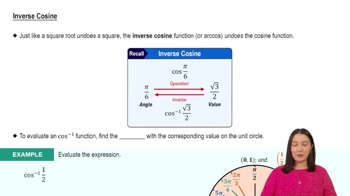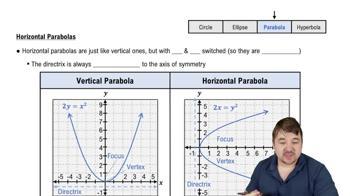Demand function Sales records indicate that if Blu-ray players are priced at \$250, then a large store sells an average of 12 units per day. If they are priced at \$200, then the store sells an average of 15 units per day. Find and graph the linear demand function for Blu-ray sales. For what prices is the demand function defined?
Table of contents
- 0. Functions7h 54m
- Introduction to Functions16m
- Piecewise Functions10m
- Properties of Functions9m
- Common Functions1h 8m
- Transformations5m
- Combining Functions27m
- Exponent rules32m
- Exponential Functions28m
- Logarithmic Functions24m
- Properties of Logarithms36m
- Exponential & Logarithmic Equations35m
- Introduction to Trigonometric Functions38m
- Graphs of Trigonometric Functions44m
- Trigonometric Identities47m
- Inverse Trigonometric Functions48m
- 1. Limits and Continuity2h 2m
- 2. Intro to Derivatives1h 33m
- 3. Techniques of Differentiation3h 18m
- 4. Applications of Derivatives2h 38m
- 5. Graphical Applications of Derivatives6h 2m
- 6. Derivatives of Inverse, Exponential, & Logarithmic Functions2h 37m
- 7. Antiderivatives & Indefinite Integrals1h 26m
- 8. Definite Integrals4h 44m
- 9. Graphical Applications of Integrals2h 27m
- 10. Physics Applications of Integrals 3h 16m
- 11. Integrals of Inverse, Exponential, & Logarithmic Functions2h 31m
- 12. Techniques of Integration7h 41m
- 13. Intro to Differential Equations2h 55m
- 14. Sequences & Series5h 36m
- 15. Power Series2h 19m
- 16. Parametric Equations & Polar Coordinates7h 58m
0. Functions
Common Functions
Problem 1.3.25
Textbook Question
Use analytical and/or graphical methods to determine the largest possible sets of points on which the following functions have an inverse.
{Use of Tech} f(x)=x21
 Verified step by step guidance
Verified step by step guidance1
Step 1: Understand that for a function to have an inverse, it must be one-to-one (bijective). A function is one-to-one if it passes the horizontal line test, meaning no horizontal line intersects the graph of the function more than once.
Step 2: Consider the function f(x) = \frac{1}{x^2}. Analyze its behavior: as x approaches 0 from either side, f(x) approaches infinity, and as x approaches positive or negative infinity, f(x) approaches 0.
Step 3: Note that f(x) = \frac{1}{x^2} is not one-to-one over its entire domain because for any positive y, there are two x-values (one positive and one negative) that map to y. This violates the horizontal line test.
Step 4: To find the largest possible set where f(x) has an inverse, restrict the domain to either x > 0 or x < 0. This restriction ensures that the function is one-to-one, as each y-value corresponds to exactly one x-value.
Step 5: Conclude that the largest possible sets of points on which f(x) = \frac{1}{x^2} has an inverse are the intervals (0, ∞) or (-∞, 0). On these intervals, the function is strictly decreasing or increasing, respectively, and thus one-to-one.
 Verified video answer for a similar problem:
Verified video answer for a similar problem:This video solution was recommended by our tutors as helpful for the problem above
Video duration:
2mPlay a video:
Was this helpful?
Key Concepts
Here are the essential concepts you must grasp in order to answer the question correctly.
Inverse Functions
An inverse function essentially reverses the effect of the original function. For a function f(x), its inverse f⁻¹(y) satisfies the condition f(f⁻¹(y)) = y for all y in the range of f. A function has an inverse if it is one-to-one, meaning that it passes the horizontal line test, where no horizontal line intersects the graph of the function more than once.
Recommended video:

Inverse Cosine
Horizontal Line Test
The horizontal line test is a method used to determine if a function is one-to-one. If any horizontal line drawn across the graph of the function intersects it at more than one point, the function fails the test and does not have an inverse. This test is crucial for identifying the largest sets of points where a function can be inverted.
Recommended video:

Horizontal Parabolas
Domain and Range
The domain of a function is the set of all possible input values (x-values), while the range is the set of all possible output values (y-values). Understanding the domain and range is essential for determining where a function is one-to-one and thus can have an inverse. For the function f(x) = 1/x², the domain excludes zero, and the range consists of positive values, which influences its invertibility.
Recommended video:

Finding the Domain and Range of a Graph

 5:57m
5:57mWatch next
Master Graphs of Common Functions with a bite sized video explanation from Patrick
Start learningRelated Videos
Related Practice
Textbook Question
